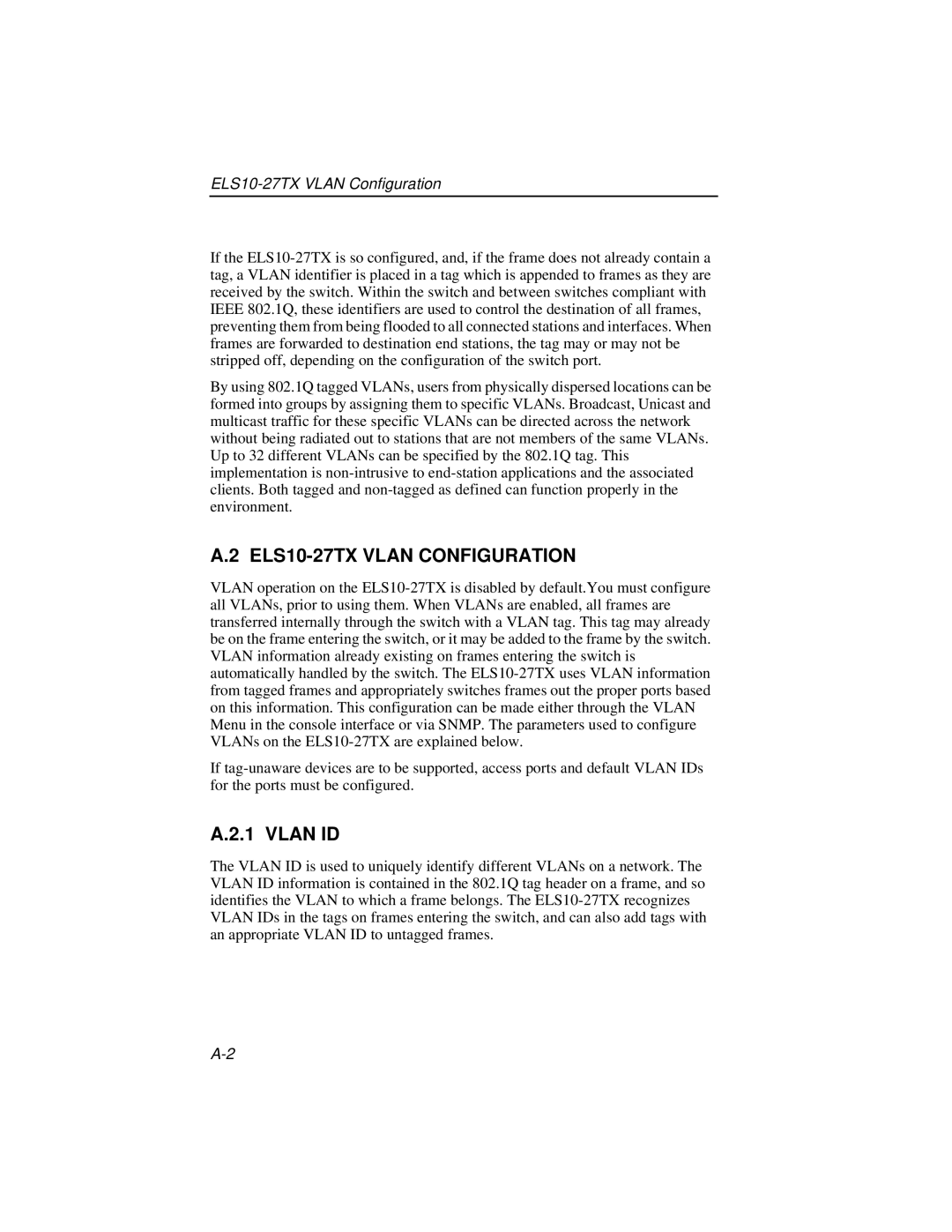ELS10-27TX VLAN Configuration
If the ELS10-27TX is so configured, and, if the frame does not already contain a tag, a VLAN identifier is placed in a tag which is appended to frames as they are received by the switch. Within the switch and between switches compliant with IEEE 802.1Q, these identifiers are used to control the destination of all frames, preventing them from being flooded to all connected stations and interfaces. When frames are forwarded to destination end stations, the tag may or may not be stripped off, depending on the configuration of the switch port.
By using 802.1Q tagged VLANs, users from physically dispersed locations can be formed into groups by assigning them to specific VLANs. Broadcast, Unicast and multicast traffic for these specific VLANs can be directed across the network without being radiated out to stations that are not members of the same VLANs. Up to 32 different VLANs can be specified by the 802.1Q tag. This implementation is non-intrusive to end-station applications and the associated clients. Both tagged and non-tagged as defined can function properly in the environment.
A.2 ELS10-27TX VLAN CONFIGURATION
VLAN operation on the ELS10-27TX is disabled by default.You must configure all VLANs, prior to using them. When VLANs are enabled, all frames are transferred internally through the switch with a VLAN tag. This tag may already be on the frame entering the switch, or it may be added to the frame by the switch. VLAN information already existing on frames entering the switch is automatically handled by the switch. The ELS10-27TX uses VLAN information from tagged frames and appropriately switches frames out the proper ports based on this information. This configuration can be made either through the VLAN Menu in the console interface or via SNMP. The parameters used to configure VLANs on the ELS10-27TX are explained below.
If tag-unaware devices are to be supported, access ports and default VLAN IDs for the ports must be configured.
A.2.1 VLAN ID
The VLAN ID is used to uniquely identify different VLANs on a network. The VLAN ID information is contained in the 802.1Q tag header on a frame, and so identifies the VLAN to which a frame belongs. The ELS10-27TX recognizes VLAN IDs in the tags on frames entering the switch, and can also add tags with an appropriate VLAN ID to untagged frames.
